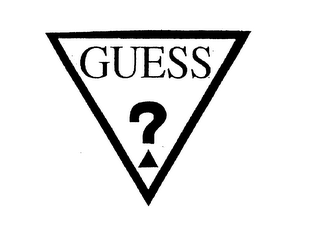At least one trademark is often involved in a sale, merger, asset purchase, or similar corporate transaction of a business. Below are some of the steps that a buyer might undertake to investigate a seller’s rights in trademarks involved in corporate transactions.
1. Proper Original Owner
A trademark application, and the resulting trademark registration, filed in the name of the wrong owner may be void and invalid. See TMEP § 803.06. Some errors in the manner the applicant was listed in the original application can be corrected, but some cannot. See TMEP 1201.02(c). Therefore, it is important to check whether the original applicant of the trademark registration was correct and properly identified on the application.
For many applications, a copy of the original trademark application can be found in the USPTO’s Trademark Status & Document Retrieval (TSDR) system.
If the trademark registration is void for being filed in the name of an uncorrectably wrong entity, then the trademark registration’s value may be discounted, and consideration should be made of filing a new trademark application.
2. Proper Chain of Title
Once it is established that the trademark registration arose from an application naming the correct owner, then the next item to review is the chain of ownership from the original applicant to the current owner. Each assignment and transfer of the registration of the underlying trademark should be reviewed to ensure a proper chain of title to the current owner of the trademark registration.
Ideally all of the assignments and transfers should have been recorded (but sometimes they are not) at the USPTO so that a search of title can be made at the USPTO’s Electronic Trademark Assignment System (ETAS). If gaps, errors, or unreleased security interests in the chain of title exist, they can be remedied before closing.
3. Assignments Include Associated Goodwill of the Business
A trademark cannot be assigned/sold alone (known as a “naked assignment” or a “assignment in gross”) without the goodwill of the business associated with the mark. U.S. Trademark law provides, “A registered mark or a mark for which an application to register has been filed shall be assignable with the good will of the business in which the mark is used, or with that part of the good will of the business connected with the use of and symbolized by the mark.” 15 USC 1060.
A naked assignment is invalid. See Sands, Taylor & Wood Co. v. Quaker Oats Co., 978 F.2d 947, 956 (7th Cir. 1992) (“the transfer of a trademark apart from the good will of the business which it represents is an invalid ‘naked’ or ‘in gross’ assignment, which passes no rights to the assignee”).
Therefore, each assignment in the chain of title from the original trademark registration owner should be reviewed to ensure that it contains a recitation that the goodwill of the business associated with the mark was transferred with the trademark to the assignee.
4. Currently Accurate Description of Goods/Services in Registration
Overtime businesses can add and/or drop products and services. It is ideal for the description of goods and services in a trademark registration to accurately and completely cover the goods and services that are now offered under the corresponding trademark. The older the trademark registration is, the more chance that change in conditions have arisen so that the description of goods and/or services in trademark registration(s) is out of alignment with the current goods and services.
If the registration(s) do not cover some of the currently offered goods or services, a new trademark application can be filed on the same mark covering the goods/services not covered by the current registration(s) (since a trademark registration cannot be amended to add goods or services).
If the current registration list goods/services not currently offered and not planned to be offered in the future, at the time for renewal of the registration, the description can be changed to remove goods/services no longer offered.
5. Unregistered Trademarks Specifically Listed
While the above points are directed to trademarks that are registered, unregistered trademarks should also be considered. Trademark rights can arise from use of a trademark in connection with goods/services, without any registration. For example, the Lanham Act protects unregistered distinctive trademarks used in commerce. 15 USC 1125(a).
Therefore, a trademark transfer document should identify unregistered trademarks that are being transferred, in addition to registered marks. Further, the goods and services corresponding to each unregistered mark should ideally also be identified in the transfer document.
These are some steps that a buyer can perform in a corporate transaction involving trademark registrations.
Note: reference to trademarks in this post also includes service marks.
 When a founder starts a business, he or she has many decisions to make. One of those is whether he or she should own assets of the business personally or whether he or she should form a corporation or LLC to own the assets of the business and bear the liabilities of a business. Founders are often quick to form a corporation or LLC to operate the business to shield themselves from personal liability arising from claims against the business.
When a founder starts a business, he or she has many decisions to make. One of those is whether he or she should own assets of the business personally or whether he or she should form a corporation or LLC to own the assets of the business and bear the liabilities of a business. Founders are often quick to form a corporation or LLC to operate the business to shield themselves from personal liability arising from claims against the business.